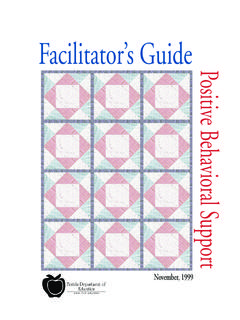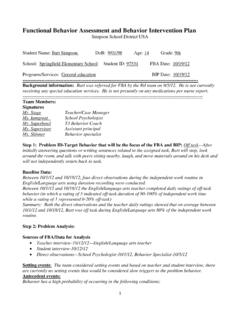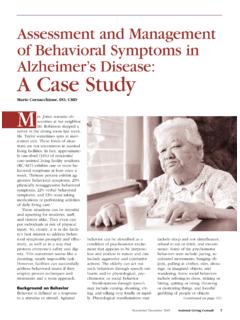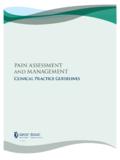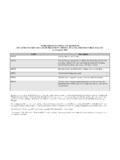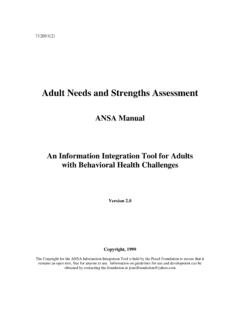Transcription of PBS Practice Methods of Functional Behavioral …
1 PBS PracticeMethods of Functional Behavioral assessment (FBA) Functional ( Behavioral ) assessment (FBA) is a systematic process for gathering information in orderto determine the relationships between a person s problem behavior and aspects of their FBA, it is possible to identify specific events that predict and maintain behavior and design asupport plan that effectively addresses those variables. FBA Methods can, and should, vary acrosscircumstances, but typically include record reviews, interviews, and direct Sample Sources/Tools Examples/Products Record Reviews Diagnostic/medical records, psychological reports, assessments from therapies, developmental profiles, social histories, previous behavior management plans, IEPs, ISPs, anecdotal records, incident reports, discipline referrals Sammy s records contained.
2 History of allergies and asthma Some effective educational strategies used in the past Patterns of discipline referrals Structured Interviews People who know the individual well and represent a range of environments (the person, family members, teachers, friends, direct service providers, etc.) may be interviewed. Some interview tools: Functional assessment Interview, Student-Directed Functional assessment Interview (O Neill et al., 1997) Motivational assessment Scale (Durand & Crimmins, 1988) Interviews of Delores s family, friends, and job coach addressed her preferences for low key settings, difficulty with dramatic changes in routine, and beliefs that she is motivated to avoid demanding social circumstances Direct Observation Observations should be conducted across a variety of times and circumstances.
3 Some observation tools: ABC (Antecedent-Behavior-Consequence) Recording Scatterplot (Touchette, MacDonald, & Langer, 1985) Frequency measures across conditions Scatterplot data indicates that Ben s biting is most likely when he is getting ready to leave in the morning and immediately after lunch FBA Methods range from highly precise and systematic to relatively informal. Particular tools andstrategies should be selected based on the circumstances, individuals involved, and goals of goal of FBA, regardless of which Methods are used, is to answer certain questions:1) Under what circumstances is the behavior most/least likely to occur ( , when, where, with whom)?2) What outcomes does the behavior produce ( , what does the person get or avoid through his or herbehavior)?
4 To answer these questions, the information gathered must be analyzed and summarized. Hypothesis (orsummary) statements describe the specific patterns identified through the FBA and, if supported by thedata, provide a foundation for intervention. A hypothesis statement must describe the behavior andThe purpose of the series on PBS practices is to provide information about important elements ofpositive behavior support. PBS practices are not specific recommendations for implementation, and theyshould always be considered within the larger context of planning, assessment and to reproduce this document is granted. Please acknowledge theRehabilitation Research and Training Center on Positive Behavioral Support in any conditions, and be clear, comprehensive, and unbiased to be useful.
5 Example: WhenSteven finishes his work early, he makes noises and destroys his materials. His behavior prompts hissupervisor to initiate an alternative activity. Frequently-Asked Questions1. When and why should a Functional Behavioral assessment be completed? An FBA may be initiatedwhen a person s behavior interferes with performance, progress, and/or participation within typical dailyroutines and environments. It is completed for the purpose of designing an effective intervention thatwill allow the person with challenging behavior to be successful across all Who should do a Functional Behavioral assessment ( , what qualifications are needed)? It isimportant to have individuals who are experienced and skilled in FBA, competent in promoting collabo-ration, and proficient in designing effective positive Behavioral support strategies involved in the pro-cess.
6 Such individuals may come from varying backgrounds ( , applied behavior analysis, schoolpsychology).3. Are there shortcuts ( , one page forms) for conducting FBAs? Yes and no. A variety of tools areavailable for data collection and synthesis. In many cases, an informal or abbreviated approach can leadto reasonable interventions. However, in other circumstances, a more comprehensive and systematicprocess is required. An appropriate FBA is one that is matched to the circumstances and leads to aneffective Behavioral support What is the difference between Functional Behavioral assessment and Functional analysis? Func-tional Behavioral assessment is a broad term referring to the information gathering and hypothesisdevelopment process.
7 It can involve a variety of Methods , including Functional analysis. Functionalanalysis is a rigorous experimental procedure in which hypotheses are tested by manipulating anteced-ents and consequences to see what impact they have on behavior. Whereas Functional analysis may beuseful in some circumstances, it is not always necessary or ResourcesDemchak, M & Bossert, (1996). Assessing problem behaviors. Innovations (No. 4). Washington, : American Association on Mental , L. & Dunlap, G. (1993). Using Functional assessment to develop effective, individualizedinterventions for challenging behaviors. Teaching Exceptional Children, 25, Neill, , Horner, , Albin, , Sprague, , Storey, K., Newton, (1997). Functional assess-ment and program development for problem behavior: A practical handbook.
8 Pacific Grove, CA: , & Horner, (Eds). (1999). Functional analysis of problem behavior: From effective assess-ment to effective support. Belmont, CA: Wadsworth of Functional Behavioral assessment (FBA)
